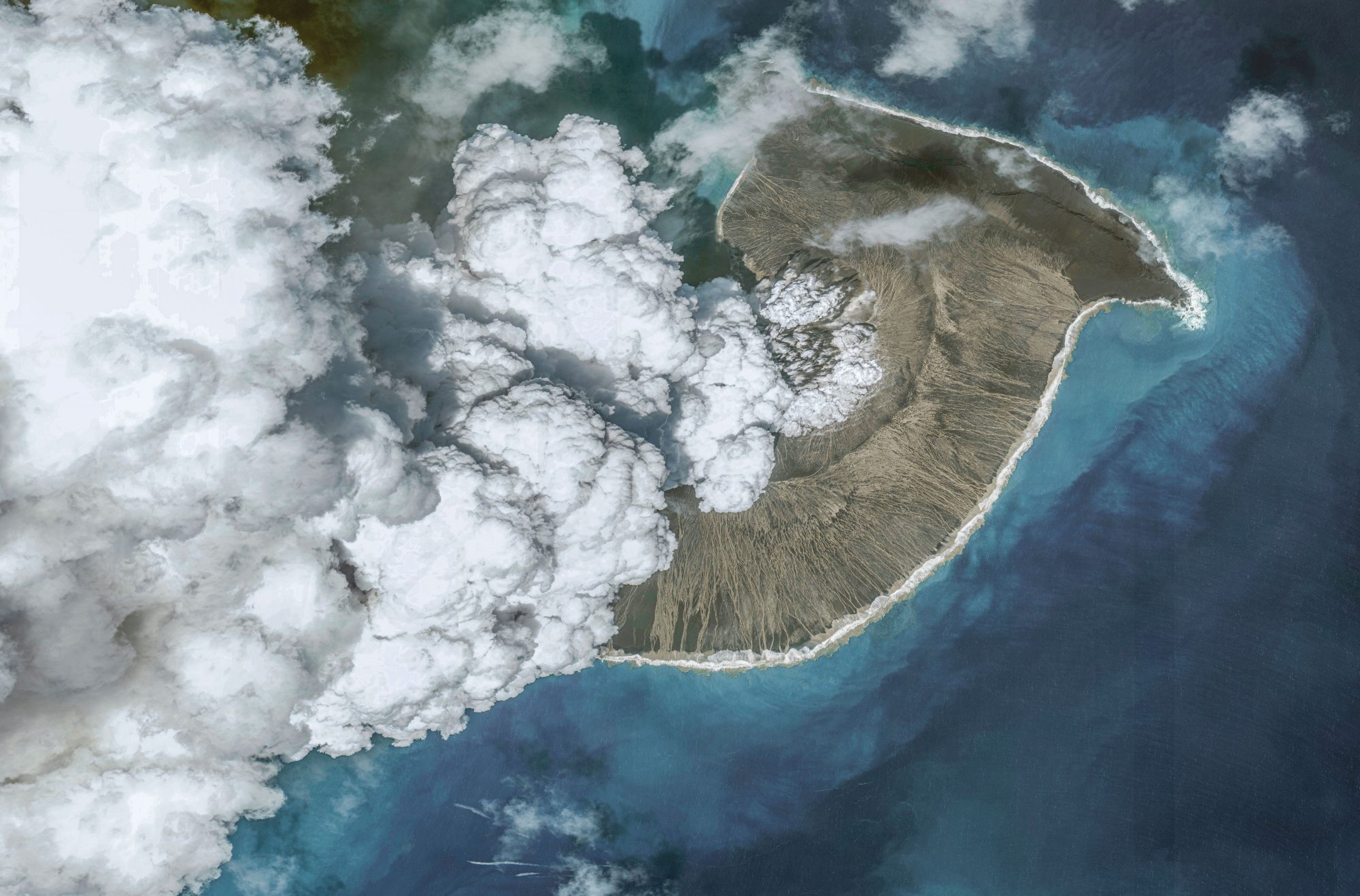
The island that blew up
When Hunga Tonga-Hunga Ha‘apai erupted in Tonga on January 15, sending a shockwave around the globe, it rewrote scientists’ understanding of volcanology and tsunamis.
It’s a quiet place for an active volcano.
Waves crash into dark rocks. There are no steaming fumaroles, bubbling pools or rumbling from deep within the earth. Just a few months ago, though, the ground where Shane Cronin and Marco Brenna now stand didn’t exist.
It’s November 2015. About a year earlier, smoke and ash plumes began to emanate from the sea here: signs of an underwater volcano in action. The submarine eruption continued into the new year, escalating on January 11, 2015, with smoky plumes jetting nine kilometres into the sky, and wet ash and rock chunks spewing into the air and sea. Five days later, a new landform had emerged: a volcanic cone, a little shorter than Auckland’s Maungarei/Mount Wellington, artfully enclosing a jewel-like crater. Its appearance conveniently connected up two existing isles, Hunga Tonga and Hunga Ha‘apai, and created a beach that’s easier to access than the impassable cliffs of the older landmasses. Cronin, a volcanologist at the University of Auckland, thinks the new cone looks quite pretty.

After setting up camp on a gravelly spot beneath the cone, Cronin, Brenna and seven other scientists set about documenting the geology of this remote volcano. Over the next five days, they clamber up and down sharp crags and rugged scree, taking samples of lava rocks deposited by past eruptions. They see erosion in action, as a rainstorm sends sheets of gravel flooding down the side of the cone. And they see signs of life: the eruption just under a year earlier flattened most of the vegetation on Hunga Ha‘apai, but tiny green shoots are now poking through the ash. Seabirds have found their way back, with tiny fluffy chicks nestling among volcanic debris. On the edge of Hunga Tonga, the scientists spot coral that has been lifted above the waterline. That’s what makes them realise the whole volcano is, as Cronin puts it, “swelling up”.
Out on the water, they sling special sonar equipment off the side of the boat to map the seafloor. There, they find the behemoth beneath the waves: an undersea volcano rising 2000 metres above the seafloor, topped with a four-kilometre-wide pit-like crater called a caldera. “People look at the cone and think, ‘That’s it?’ But that’s actually just a tiny little pimple on the edge of this large volcano,” says Cronin.
Back in New Zealand, Cronin, Brenna and others analyse the lava samples they’ve collected. Two samples have distinctive chemistry pointing to a violent past. While Hunga periodically gurgles up volcanic cones, it has also erupted on a much bigger scale twice before, in 200 AD and 1100 AD. In other words, it’s on a roughly 900-year cycle, and the last eruption took place 900 years ago.
[Chapter Break]
Six years later, that pretty little cone is obliterated. On January 13, 2022, a plume of gas and ash rockets into the sky. The next day, tide gauges on Tongatapu, Tonga’s main island, register an unusual surge—a small tsunami. Taaniela Kula, head of Tonga Geological Services, heads north on a boat with his staff to check out what is happening. The volcano is about four hours’ travel north of Nuku‘alofa, the capital, and when the geologists draw near, it’s erupting vigorously, steaming and shooting ash into the sky. A three-kilometre-wide column belches up into the atmosphere. Kula and the Geological Services team monitor the spectacle for about two hours.

“We’re a different species, geologists,” says Kula. “We observe, we sit and see what we can see.”
Overnight, the ash-spewing dies down, and on the morning of Saturday, January 15, the volcano is quiet. It looks like it has gone back to sleep, just as it did after its last phases of activity in 2009 and 2015.
That evening, Kula is off duty, on his way to buy food near the waterfront in downtown Nuku‘alofa. Suddenly, he hears what sounds like thunder and sees a plume rising to the north. His phone rings: it’s a colleague from the western side of the island, reporting a large blast. The time is 5.20pm. Four minutes later, his colleague calls back: Kanokupolu, a peninsula stretching out from the northwestern corner of Tongatapu, is evacuating. Resort owners on the waterfront spotted incoming waves and sounded the alarm, and now the whole village is heading to higher ground.
Kula drives along the waterfront, where police are ushering people away from the shore. At 5.30pm, sirens begin blaring: an official tsunami warning. The warning doesn’t come in time for Kanokupolu; waves have already struck the peninsula, but the locals’ immediate evacuation saved their lives.Kula turns inland to head into the Tonga Geological Services office, but finds the streets clogged with people evacuating to higher ground. At 5.36pm, an even bigger blast rattles buildings and shatters windows. At the waterfront, the first tsunami wave arrives. Waves begin to inundate the roads, swirling around buildings.

A few minutes later, as traffic crawls, the sky goes dark. Kula calls in to live radio, trying to reassure the people of Tongatapu. Then, at 5.54pm, ash begins to fall. Tiny pebbles drop out of the sky and onto the bonnet of Kula’s car.
It takes 50 minutes for Kula to cover the five kilometres to his office. By the time he arrives, the internet has been cut off. Then the power goes out. Geological Services staff pack up and move to the national emergency centre, where they begin taking calls, recording and logging information.
When emergency staff arrive an hour later, Kula ventures back out into the ashfall darkness, now punctuated by bursts of lightning, to check the tide gauges. It’s like driving blindfolded. When he reaches the waterfront, he catches glimpses of chaos caused by the tsunami. Asked later about it, all he’ll say is, “It was pretty bad.”
[Chapter Break]
The January 15, 2022 eruption of the Hunga volcano was one of superlatives—and surprises. “The eruption just came out of nowhere,” says Kula.
It was the most explosive eruption on Earth since the 1991 Mount Pinatubo eruption in the Philippines. A plume of ash and debris rocketed nearly 40 kilometres up into the atmosphere and ejected somewhere between 0.5 and 2.0 cubic kilometres of debris—enough to fill Auckland’s drinking water dams 20 times over. Within 30 minutes, an umbrella cloud had spread over 350 kilometres in diameter and, within an hour, had doubled in size again, appearing in satellite images as a smoky bloom across the southwest Pacific. This ash cloud triggered more than 200,000 lightning strikes in a single hour. The eruption sent shockwaves around the world, with sonic booms heard as far away as New Zealand, more than 2000 kilometres away. It also propelled a tsunami across the entire Pacific, causing damage in Japan, injuries in California and casualties in Peru.
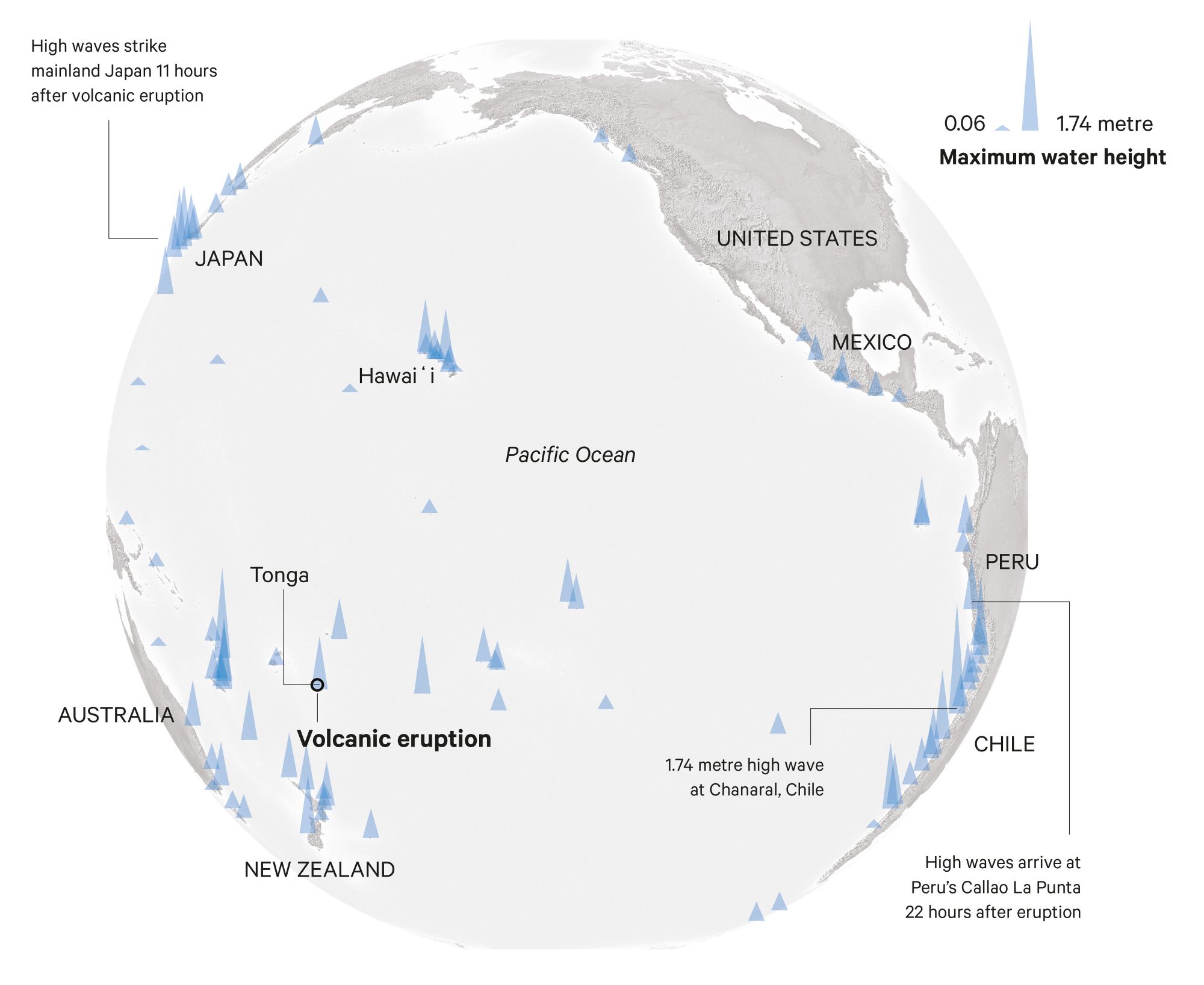
“This was a truly astounding event in terms of explosive scale,” says Cronin. “To get something that big is very unusual.”
This kind of volcano doesn’t usually produce such massive eruptions. Volcanoes come in different types: some spurt flowing lava fountains, like Kīlauea in Hawai‘i. Others are mega-explosive supervolcanoes, like Taupō and Yellowstone. Hunga is somewhere in between, akin to Ruapehu. Cronin knew the volcano well, and it didn’t seem capable of producing this size of ash column, umbrella cloud and tsunami.
[Chapter Break]
It’s a scorching Saturday afternoon in Auckland, and Cronin is at the beach, trying to relax, when he spots the Hercules buzzing across the sky. It’s early. Cronin rushes to Whenuapai air base to collect its precious cargo: a plastic bottle filled with 150 grams of volcanic ash scooped off the side of the Nuku‘alofa runway by the New Zealand Defence Force on their second relief mission to Tonga.
This ash is yet another unusual feature of the eruption. It’s super fine-grained, ranging from powdery to a gritty, sand-like consistency. “Very fine-grained material coupled with a high plume tells us that the explosive energy was incredibly strong, because you’ve broken the magma into tiny pieces,” says Cronin.
Using a powerful microscope, he takes a close look at the edges of the ash grains. Each grain has growth rings, just like the growth rings in a tree. And, just as tree rings record what each growing season was like, the growth rings on a grain of ash record the history of the molten rock as it rises through the Earth’s crust.
“There are some remarkable things preserved in this ash,” says Cronin. “A lot of the processes were captured in freeze-frame, and we are getting a really startling look at what goes on during eruptions that we don’t normally get.”
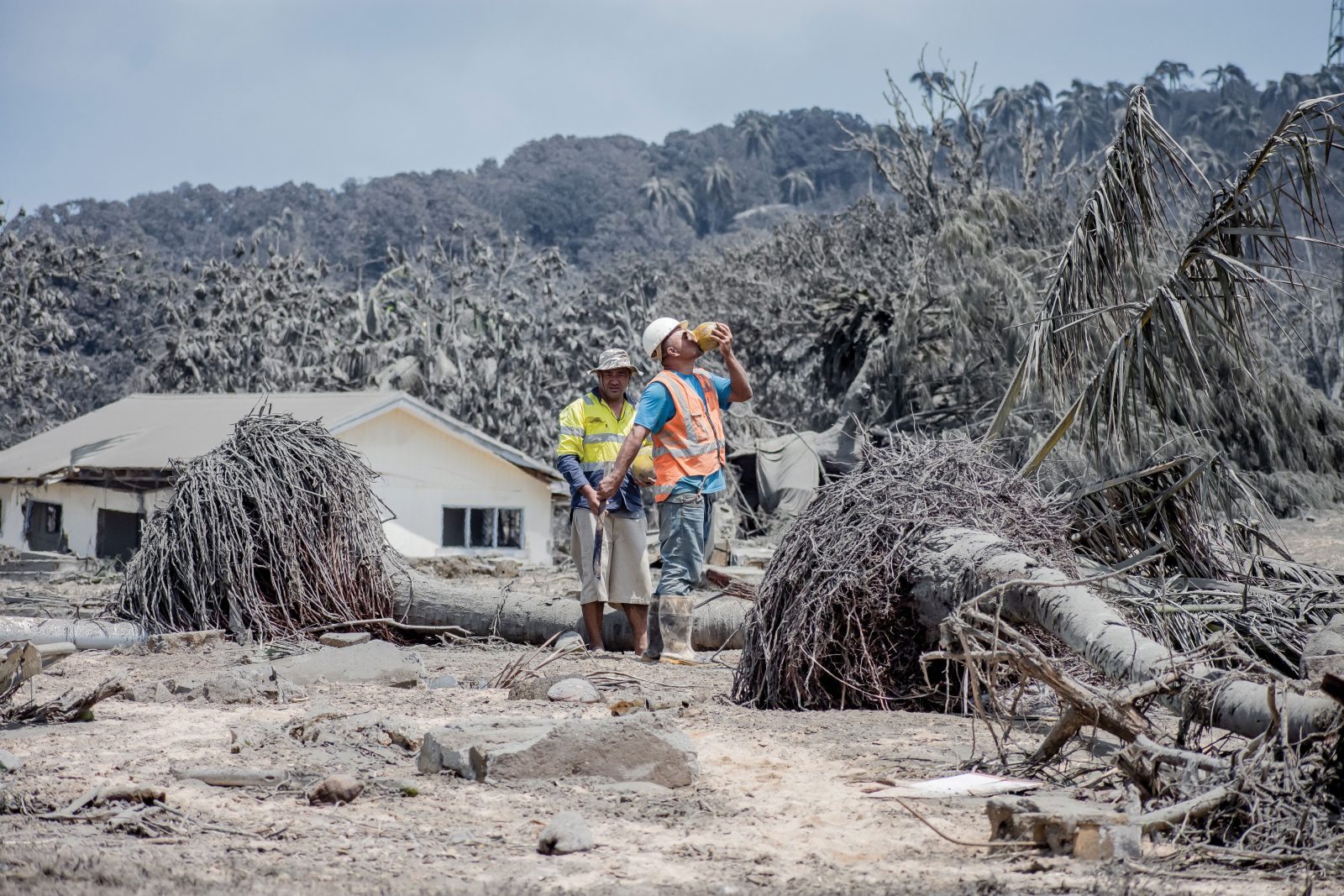
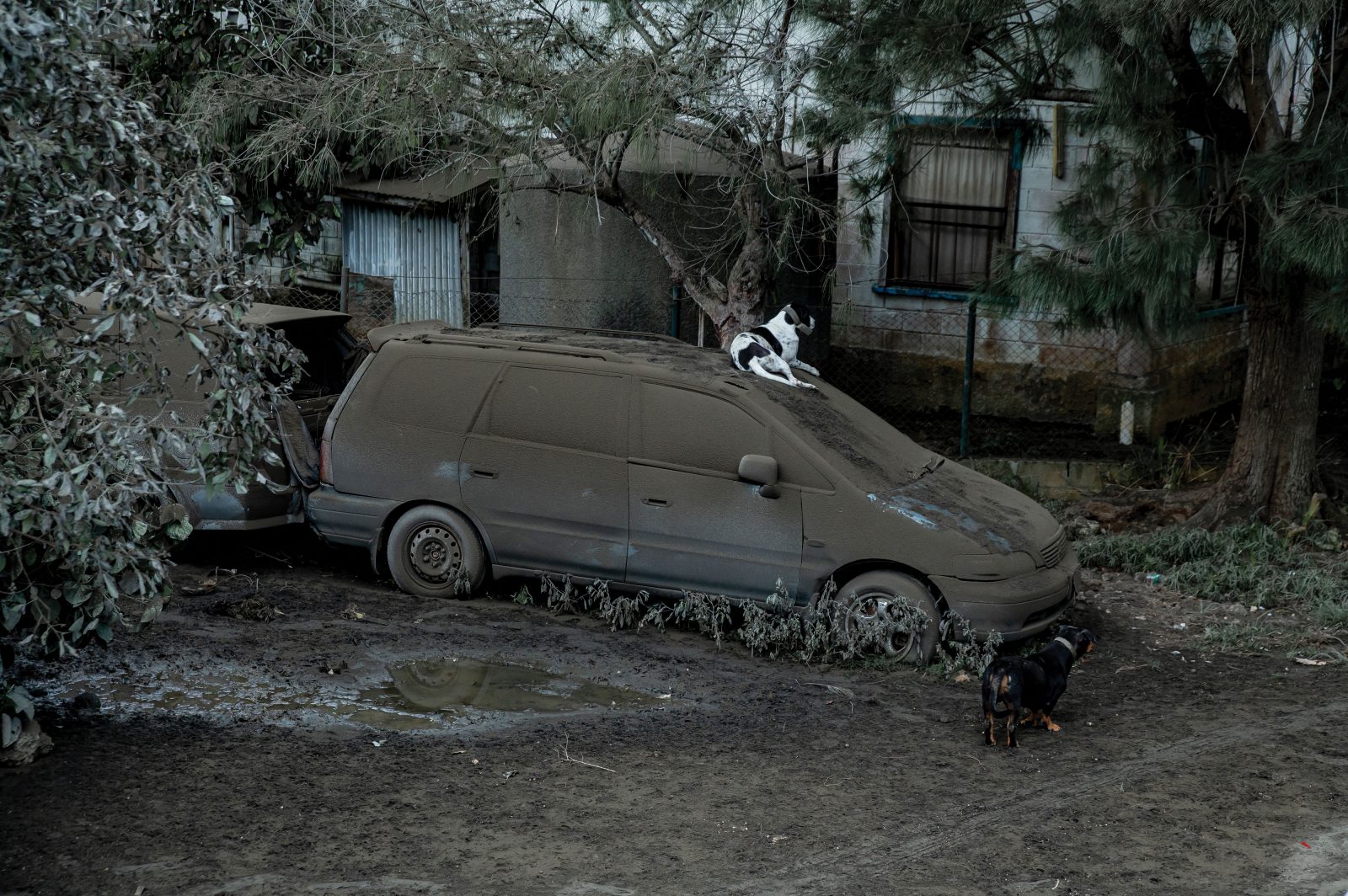
Cronin also sends samples of the ash to scientists around New Zealand who are part of the Volcano Science Advisory Panel. Results roll in over the following weeks, and the panel feeds it back to Tonga—information about what the volcano might do next (further eruptions are likely) and the potential health risks of ash contamination in drinking water (filtered rainwater might taste a bit funny but should be safe to drink).
By combining the information inscribed in the ash with what’s been seen during and after the eruption, scientists can start to piece together exactly what happened.
Cronin thinks the eruption started in a chamber some five to seven kilometres below the Earth’s surface, where magma accumulates, causing Hunga to swell. The trapped magma rises fast, releasing gas and building up even more pressure at the top of the volcano. Just as bubbles in a champagne bottle foam up once you pop the cork, bubbles of gas in magma press upwards and, eventually, molten rock blasts out of the ground. This forms pumice—very light volcanic rock riddled with holes left by the gas bubbles.
There is some pumice material in the ash, indicating that this kind of gas-propelled cork-pop explosion occurred—but that isn’t the full story. “Most of the particles are actually quite dense. Some even look like little bits of obsidian, they’re so dense and glassy,” says Cronin. There must be something else contributing to the extreme explosiveness.
Was it the fact the volcano was underwater? Hot magma shooting out of the earth at 1100 degrees Celsius and meeting cool seawater is a relatively explosive phenomenon, like water flashing into steam when it hits a hot frying pan. “But that still won’t give us enough violence,” says Cronin. “There must have been some other mechanism at play.”


Cronin speculates that a hydrothermal vent system may be responsible. Seawater seeps into cracks and fissures in the top of the volcano, where the water is heated by shallow magma and shoots back out again, like spa jets. Minerals associated with this hot water circulation system, such as silica, can form a seal that further pressurises the volcano. When magma from deeper in the crust rises and meets seawater inside cracks and crevices, it explodes, but has nowhere to go, creating a series of chain reactions and building pressure. Finally, the volcano blows, blasting a hole in the seafloor that is immediately inundated, further fuelling the magma-meets-seawater chain reaction.
“This is all speculation, but from what we see, there is quite a bit of hydrothermal material in the ash, so that’s indicative of this hydrothermal system maybe being involved,” says Brenna, who’s now at the University of Otago.
In fact, the style of eruption seen at Hunga is so unique that some volcanologists are even calling for it to be given a new classification.
[Chapter Break]
Volcanology isn’t the only branch of science being rewritten thanks to the Hunga eruption—the event is also shifting our understanding of tsunamis. “I was pretty blown away,” says Emily Lane, a hydrodynamic scientist at NIWA. “It’s definitely one of those events that makes a tsunami scientist really recalibrate.”
Around five per cent of tsunamis are triggered by volcanic eruptions (most are caused by undersea earthquakes) and almost all volcano-generated tsunamis peter out within a couple of hundred kilometres. The tsunami set in motion by Hunga was unprecedented.
“The last time something like this happened was in 1883, when Krakatau in Indonesia erupted and a tsunami was measured all the way around the Pacific,” says Lane. “But even then, there’s a difference between ‘we measured a tsunami’ and ‘there was a tsunami in Tutukaka that was big enough to cause millions of dollars of damage’.”
There are a few different ways that a volcano can cause a tsunami: the sheer force of the explosion, the collapse of the caldera crater, or a landslide of unstable volcanic debris, called a flank collapse. (Lane says that may have been what set off the small tsunami registered on Tonga’s tide gauges on January 14.) And sometimes a tsunami is generated when the air column of debris collapses, sending material crashing down into the ocean and across the seafloor in a pyroclastic density current—an underwater version of the deadly surges seen on Whakaari/White Island in December 2019.
“Probably at least three—if not all—of these things were involved in the local tsunami on the 15th,” says Lane, “but it’s going to take us years to unpick exactly what happened.”
The 1.2-metre tsunami in Tonga destroyed homes and infrastructure, and left some smaller islands facing the prospect of relocating villages to higher ground—or even to entirely different islands, says Kula. The waves claimed four lives, a death toll that is remarkable for not being higher.
“The Tongan Meteorological Service have done an amazing job making sure people are aware,” says Lane. “With the small tsunami, they got the message out, so it was actually in people’s consciousness when the big one happened.”
The big one was notable for its reach, and scientists are attributing this to a powerful pressure wave generated by the eruption. The shockwave pumped extra energy into the existing tsunami, supercharging it, meaning it could travel much further and was still relatively large in places like Japan and the Americas. “It’s a game-changer in terms of moving it from a local tsunami to something that can go all the way across the Pacific,” says Lane.
[Chapter Break]
While the people of Tonga recover and rebuild, Hunga’s once-in-900-years outburst may not yet be over. The lava deposits found by Cronin and Brenna on their 2015 visit show that the last large eruptions each involved a sequence of big events.
Satellite images give volcanologists clues about how the volcano has changed and how future eruptions might play out. Hunga Tonga appears to have collapsed into the caldera, while Hunga Ha‘apai appears to be intact, but may have dropped by around 10 metres.

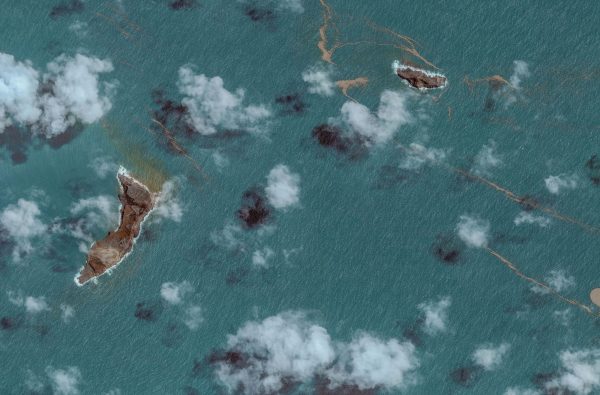
“We’ve totally rearranged the upper part of the volcano,” says Cronin. “The hydrothermal system is well and truly gone, so if subsequent magma rises, it’s like the cork is already off the champagne bottle. We anticipate ongoing eruptions will occur—but they may be less violent.”
Continual earthquakes in the region may point to fresh magma churning in the volcano’s stomach.
“Some people think that might be indicative of fresh magma entering the reservoir, in which case future eruptions would be possible,” says Brenna. “But it’s really uncertain.”
The difficulty of figuring out what future eruptions might be like is exacerbated by the lack of monitoring available in Tonga.
“It’s highlighted the real lack of infrastructure for monitoring volcanoes in the southwest Pacific,” says Cronin. “If it were a volcano in New Zealand, or North America, or Japan, we’d have tonnes of seismographs around the thing in the beginning, and we would have added more, so we’d be knowing what was going on in the magma system below the volcano.”
We may not be able to predict the deadly whims of volcanoes, but aiming seismic eyes on natural hazards helps scientists to understand risks.
“Having seismic signals from the eruption once it began in December would have helped to forecast that this big event was on its way,” says Cronin.
Even with the tools of science, Hunga proves that volcanoes continue to harbour explosive secrets—and every once in a while, they’ll disgorge those secrets in spectacular fashion, sending shockwaves around the world.
















